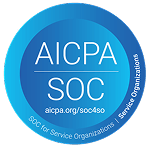Deciding if a private student loan is right for you
Before diving into personal education loans or private lender options: Do I really need to borrow? Private loans can be powerful tools, but they’re also long-term commitments. Start by adding up:
- What scholarships and grants you can access
- How much you (or your family) can contribute directly
- How your chosen program’s costs break down – don’t forget housing, insurance, and day-to-day expenses!
If there’s a gap that can’t be covered by these other sources, a private loan becomes a practical bridge – not a last resort, but a strategic step.
Examples of how different international students approach private loans
- Sara, an engineering master’s student from Nigeria: Sara couldn’t find a U.S. cosigner, so she explored no-cosigner lenders. She compared options like MPOWER Financing, weighing the trade-off of a slightly higher rate for the independence and flexibility it offered.
- Luis, an MBA student from Mexico: Luis had an aunt in the U.S. who was willing to cosign. He used a traditional bank loan, which offered lower rates but required careful communication to keep everyone on the same page.
- Mei, a data science student from China: Mei’s university had a small loan fund for international students. She combined a smaller no-cosigner loan with on-campus work to cover her living expenses, while also researching additional F-1 student loans for the future.
These examples highlight that there isn’t a single “best loan” – there’s the loan that fits your situation.


